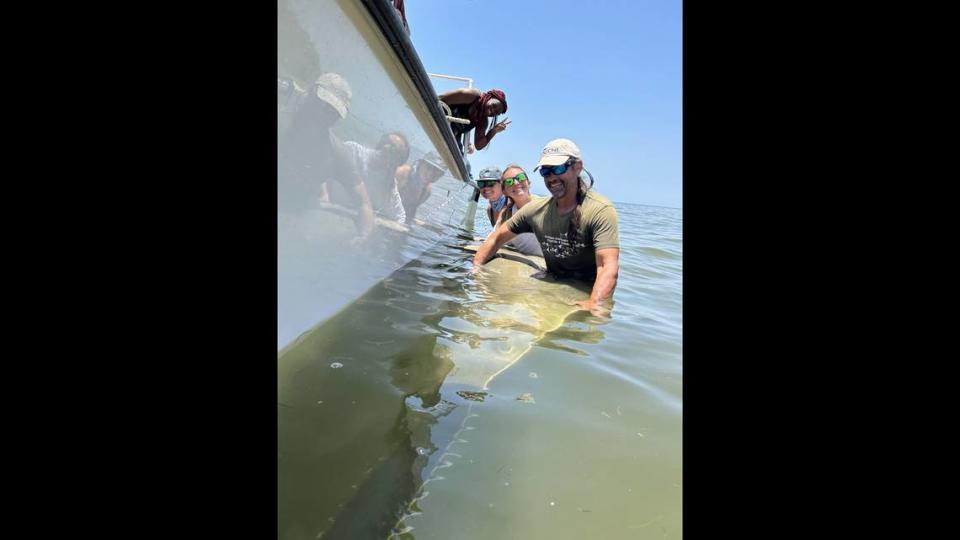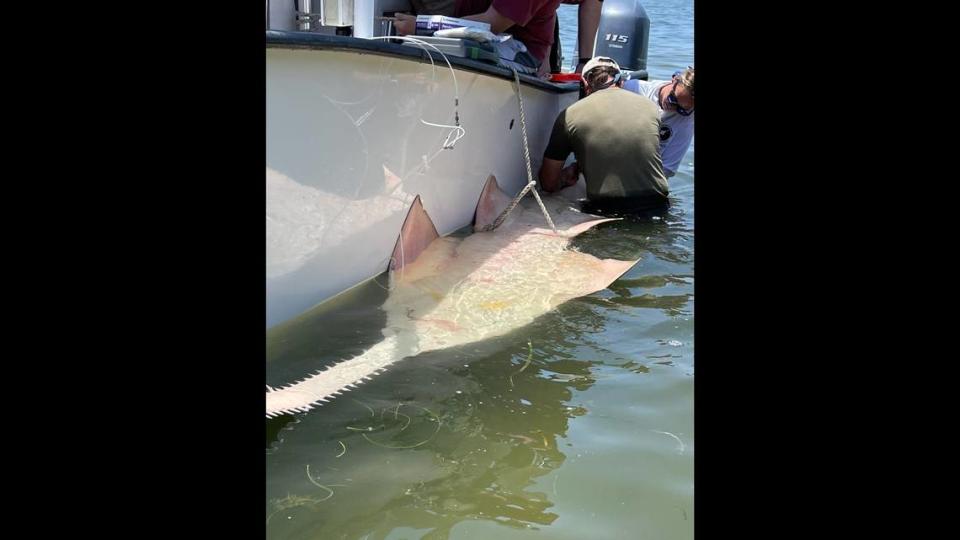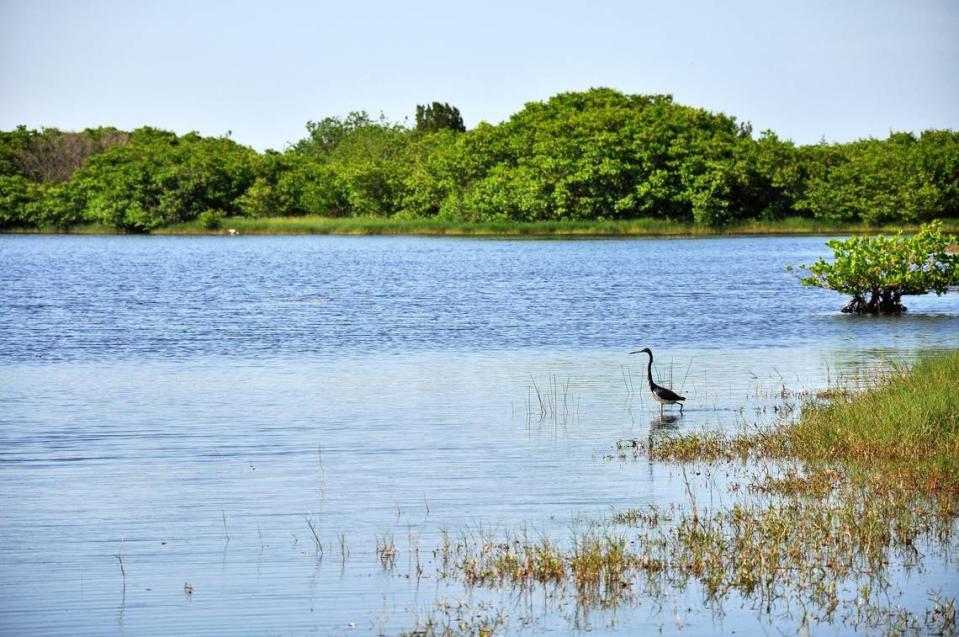Endangered 13-foot sawfish caught off Florida coast. Why that’s good news for species
Growing up on the Gulf coast of Florida, shark researcher Dean Grubbs has always been fascinated by nature’s ancient animals.
“I caught a little sharpnose shark when I was 7 years old, and I thought it was the coolest thing I’ve ever seen, and (I) told my parents I was going to be Jacques Cousteau,” he told McClatchy News in a phone interview. “That fascination never changed.”
Now the associate director of research at Florida State University’s Coastal and Marine Laboratory and part of the U.S. Smalltooth Sawfish Recovery Implementation Team, Grubbs co-teaches a two-week sharks and rays course for graduate and undergraduate students with evolutionary biologist and director of the Florida Museum of Natural History’s shark research program, Gavin Naylor.
Grubbs and Naylor were with a group of students off Seahorse Key, an uninhabited island near Cedar Key and just south of the Florida panhandle, in June when they felt a tug on their line.
The group had lines with different types of hooks being pulled through the water in hopes of snagging anything from a newborn sharpnose shark to a giant tiger shark.
Grubbs thought the pull must be coming from a nurse shark, which is local to the area and a bottom feeder.
Then, they saw a long protrusion covered with teeth — and they freaked out.
“I was pretty sure this was a sawfish, but I remained stone-faced because I didn’t want to disappoint the students if I was wrong,” Grubbs told the Florida Museum of Natural History in a July 10 release. “I saw the tail before the rostrum, so I lost my calm at that point and screamed ‘Sawfish! It’s a sawfish!”
In the water was a 13-foot sawfish, an endangered species that is rarely spotted.
“You’d be a fool to think we’d catch one, but we did,” Grubbs told McClatchy News. “It’s great.”

With the sawfish on the line, the researchers and students jumped into the water and flipped the ray over, initiating a biological response called tonic immobility.
“Some of the students were aghast and in awe, I think immediately,” Grubbs said. “Some, maybe they didn’t quite realize, at first, just how special this event was.”
The ray became still, and the researchers took measurements, inserted a tracker and checked the health of the animal.
The sawfish was an adult, breeding female, and her health is crucial for the species’ success.
“She has a transmitter now that will last for 10 years … We’ll be able to track her movements for the next decade,” he said. “We also collected blood from her that we’re going to use to look at reproductive hormones to verify whether she may be pregnant and in that reproductive state.”
After the data was collected, the sawfish was returned to the water to swim another day.

A lifeboat population
Smalltooth sawfish, Pristis pectinata, were first protected by the state of Florida in 1992 before becoming officially listed in the Endangered Species Act in 2003, Grubbs said.
The species used to span the entire eastern seaboard, around the tip of Florida to the coast of Texas, Naylor told McClatchy News in the interview, before fishing and hunting knocked their populations down to a small lifeboat population off the south coast of Florida.
Now, the sawfish caught by the researchers is the farthest north one has been tagged in at least 30 or 40 years, they said.
“The center of the distribution for the population has always been South Florida, the Everglades, Ten Thousand Islands and through the Florida Keys,” Grubbs said. “Among the signals to us that the population is starting to come back, we want to see them reoccupying some of the areas that we know they used to be.”
The researchers are hopeful the species is moving in the right direction.
“Because these animals are so peculiar, and that they’re sort of like dinosaurs, people get super excited by it, they know that they’ve been endangered,” Naylor said. “Florida has done a fairly good job of marketing these things as ‘Uniquely Florida,’ and a wonderful piece of its natural history.”

Florida’s hidden jewel
Seeing a sawfish near Cedar Key is just the first step in making sure the species continues making progress.
“The area (is) really an unspoiled part of the U.S., it’s a fairly pristine area,” Naylor said. “So it’s wonderful to actually expose the students to this area … for animals that are iconic and people are interested in.”
Naylor, who is originally from England, said the “Big Bend” of Florida, the area north of Tampa stretching north to the panhandle, isn’t known to tourists, whether they are traveling from across the pond or across the country.
“This is probably the most pristine biological marine system,” he said. “It’s a hidden jewel, and it’s so full of life.”
These systems provide a haven for sharks and rays to live, reproduce and grow their populations, the researchers said.
For the sawfish, the latest catch is a ray of hope.
“I think the prognosis for their future survival is very good,” Naylor said.
Cedar Key is about 135 miles north of Tampa.
An albino crow? A baby one was just discovered in Connecticut. See the rare creature
See elusive wolverine family slide down snow bank in ‘unique sighting’ in Alaska
New creature — with no eyes and nearly 500 legs — found lurking under California’s soil
Rare twin giant panda cubs born at South Korean zoo. See the tiny, squirming cubs

